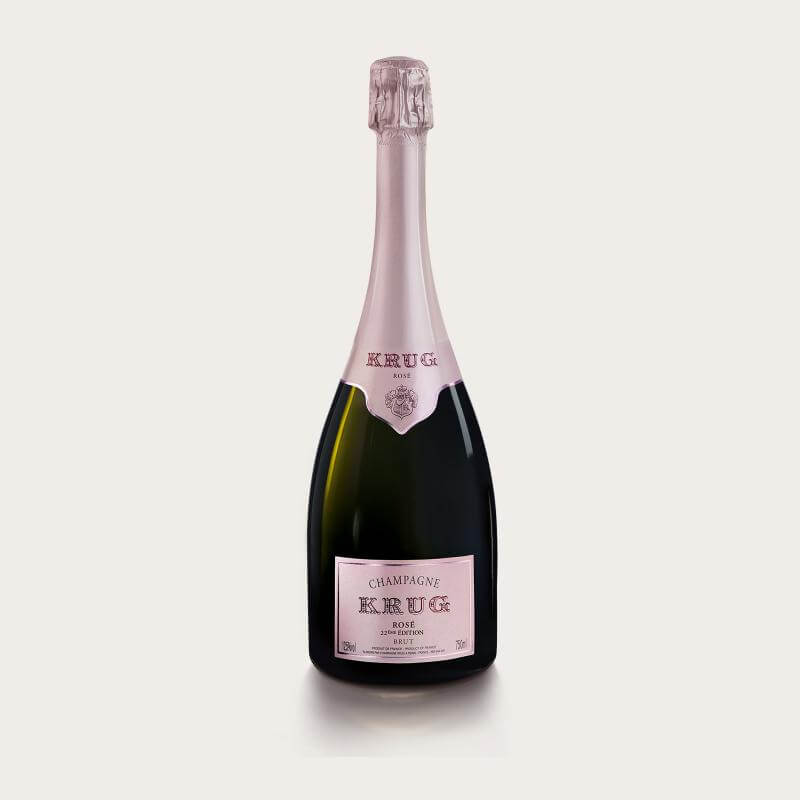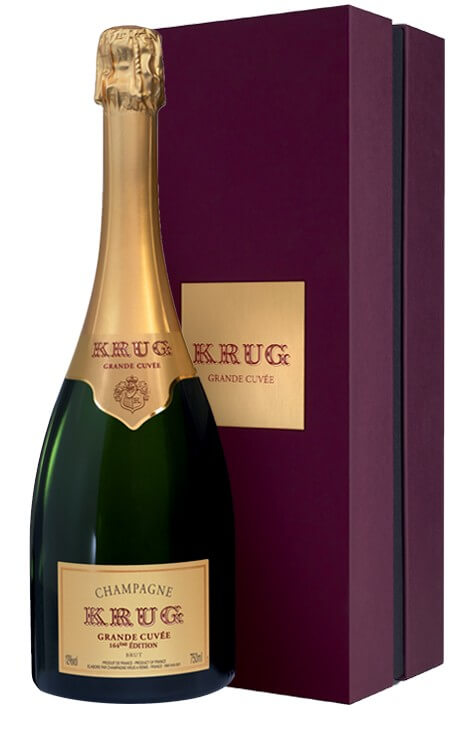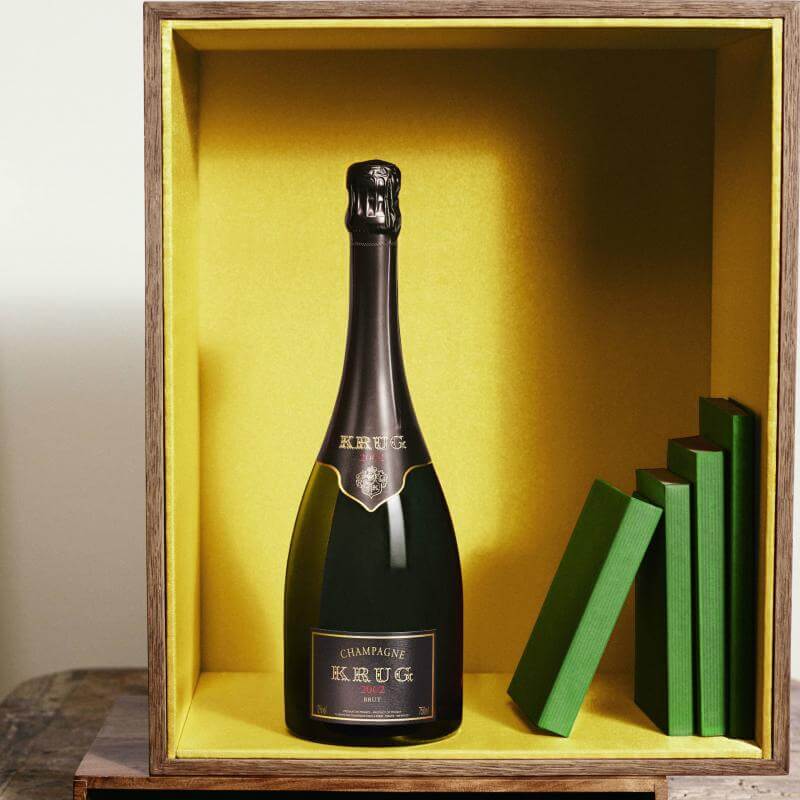Krug Champagne: A Story Of Krugists Earning Five Cases Per Year Every Year For The Rest Of One’s Life And Wine Tasting Like “. . . Angels Have Descended From Heaven” – Reprise
by Ken Gargett
There is an old saying: “There are champagne lovers and then there are devotees of Krug.”
Krugists. Does any other champagne, any wine, have a word to designate their adoring fans?
Anyone who expresses even so much as a fleeting interest in great wine will soon come across Krug, for many the greatest champagne of all.
It is worth stepping in at this stage to stress that “the greatest champagne of all” can only ever be a personal and very subjective assessment. If you like the richer, more complex styles, Krug will be right up your alley. If you prefer a fresher, more elegant champagne, you’ll find others to fit the bill.
Most remember their first sip of Krug, though it is not always the fireworks one envisages. For mine, a friend pulled out a magnum of 1976 many years ago – a fine, if hot, vintage and although it is very highly regarded by many, I have always preferred years such as 1975.
No matter: I was about to taste the fabled Krug. I indulged in the obligatory sniff and raised the glass and took my first sip. To say I was underwhelmed is probably harsh, but the world continued to spin on its axis and angels did not descend from the heavens.
I’m not exactly sure what I was expecting, but I firmly believe that Krug is a wine – and there is a good argument that it is a wine first and champagne second – that needs time and some effort to understand and appreciate. You don’t hand a first-grader King Lear to read, either.
But it is a journey worth taking. Good Krug is a true joy.
Krug is a champagne that will feature heavily in any book on champagne and there have been books devoted to nothing else. Even youthful cricket lovers will surely know of John Arlott, the greatest of all commentators. Arlott was also a poet, reflected in so much of the cricket writing he left for us, and a wine writer.
In the early 1970s, he wrote the book Krug. By chance, I met his daughter in Champagne many years ago when she was doing a documentary. She told me his “fee” was five cases per year every year for the rest of his life.
I had never, despite endless searching, been able to locate a copy of the book. Then a month ago, some friends were discussing wine books and one mentioned she had a copy, which she kindly sent to me. I’m loving it, though it is inevitably dated and there are what we now know to be glaring errors. All part of the fun.
We are fortunate in Brisbane as we have one of the world’s great champagne palates and educators, Bernadette O’Shea, and it would be a brave chef de cave (head winemaker) who ventured to Australia and did not come to Brisbane to do a dinner with her.
I would add that her classes, let alone her dinners and events, are so highly regarded that she has had many Australians fly interstate to attend them, as well as some from overseas. Her book, Champagne & Chandeliers, is a must for lovers of the finest fizz. All can be accessed at www.champagneconsultant.com.
One of Bernadette’s most recent, and finest, events was to host the inimitable Maggie Henriquez, president of Krug. Needless to say, the champagnes were exemplary (we’ll get to them), but there is a new concept in respect to the house’s non-vintage champagnes, which the brand correctly prefers to refer to as multi-vintage wines, worth noting.
Krug’s champagnes
Krug Grande Cuvée, the multi-vintage wine, is seen as a cut above most of the non-vintages offered by its peers. Non-vintage champagne has always been the mainstay of a house’s production, and the houses will always insist it is their most important wine, notwithstanding that almost every wine in the portfolio will be more expensive than it.

Krug Grande Cuvée
A few houses, however, have recently put their money where their slogans are. Charles Heidsieck skipped a few vintages, including the superb 2002, to build up reserves for use in its non-vintage. Krug has apparently made the extraordinary decision not to release a 2012 vintage for the same reason.

Krug Rosé
Krug has a number of scintillating wines: a multi-vintage Rosé; vintage, single-site wines with the Blanc des Blancs Clos du Mesnil and the Blanc des Noirs Clos d’Ambonnay; and the Collection series – vintage wines that have seen extended time on lees for even more complexity.
Previously, these were simply vintage Krug left in the cellars to age on cork. Now, they remain on lees for extra complexity, another innovation from Henriquez.
Some years ago, I had the chance to try the Krug Collection 1928, often considered to be the greatest champagne ever made. It was certainly coming to the end of its life, but was still showing so much, and such amazing, complexity.
With the Grande Cuvée, Krug has done what was once unthinkable. Non-vintages were supposed to be identical, year after year, no matter whether you bought the bottle this year in Rio or in five years in Cape Town. Now, common sense said that, despite the extraordinary skill of the chefs du cave in blending these wines, and none has ever exhibited greater skill in this arena than the Krug family, this was not true.
Very similar, sure, but vintage variation for both base wine and the various reserve wines added to make the final blend would ensure subtle differences.
Finally, Krug has bitten the bullet and acknowledged that by noting the edition of the release. Yet again, the world did not stop turning. In order to ensure authenticity, Krug went back to its roots, to the earliest days, and identified every release.
Over its long history, it turns out that it has released more than 160 different Grande Cuvées. If you buy a Grande Cuvée today, you will see the edition and then be able to identify the base wine. The first to exhibit this detail on the label was the 163rd edition (base year 2007). The latest Rosé is the first of that style to join the program as edition 21.
The current Grande Cuvée, the 166th Edition, has 2010 as its base wine – a fine vintage – but to this will be added an array of reserve wines from different grapes, different vintages, and different vineyards. In this edition, there are more than 120 wines in the blend.
It is a welcome innovation, but one that has created some unforeseen issues. Some Krugists are now chasing specific editions depending on the base wines. For example, the 164th Edition has become highly desirable as the base year is the superb 2008.

Krug Grande Cuvée, 164th Edition
They seem to forget that after the team at Krug has completed its wizardry, expect any Grande Cuvée release to be as exciting as the rest (and there is a rumor going around suggesting that not even the Krug team can identify the different editions), so do not hesitate to purchase any Grande Cuvée.
One could go on and on about Krug, endlessly. It is that sort of wine. But to finish, here is a quick run through some recent examples.
Grand Cuvée 163rd Edition: stone fruit, red berries, bergamot, coffee bean notes. Impeccably balanced with a gentle finish, though great length. 96.
Grand Cuvée 166th Edition: again great length and with notes of oatmeal, nuts, stone fruits, toast, and a near custard-like texture. Powerful and complex. 96.
Rosé 21st Edition: all strawberries and fragrant red fruits with rose petal and cinnamon notes. Fresh, linear, and elegant. 95.
Vintage 2000 (magnum): plush, expressive, and incredibly long. Lighter than some examples, but exquisite. Great balance. 98.
Vintage 2002: a great Krug from a great year. Regal and imperious. Balance, complexity, length, power, and an exciting future. 99.
Vintage 2004: one of only three vintage Krugs to have more chardonnay than Pinot Noir in the blend (the others being 1998 and 1981). Grapefruit, perfumes, nuts. More elegant than 2002. 98.
Krug Collection 1990: mandarins, crème brûlée, quince, and honeycomb. Apricot, nougat, and even an Yquem-like note without the sweetness. So complex and yet still so full of life. If champagne gets any better than this, I want to know about it. 100.

Krug Vintage 2002
The angels have descended from heaven now.
For more information please visit www.krug.com.
This story was first posted on January 31, 2019 at Krug Champagne: A Story Of Krugists Earning Five Cases Per Year Every Year For The Rest Of One’s Life And Wine Tasting Like “. . . Angels Have Descended From Heaven.”
You may also enjoy:
- Louis Roederer Cristal 2008: Supreme Elegance And Ethereal Grace
- Pol Roger Cuvée Sir Winston Churchill 2006: From A Long And Complex History
- Perrier-Jouët Belle Epoque Blanc de Blancs: One Of The Finest Champagnes I Have Ever Enjoyed
- Bollinger RD 2004: When It Came To Champagne (And Much Else), Madame Bollinger Had Excellent Taste
- Louis Roederer Rosé 2012: A Gloriously Ethereal And Elegant Champagne



Leave a Reply
Want to join the discussion?Feel free to contribute!